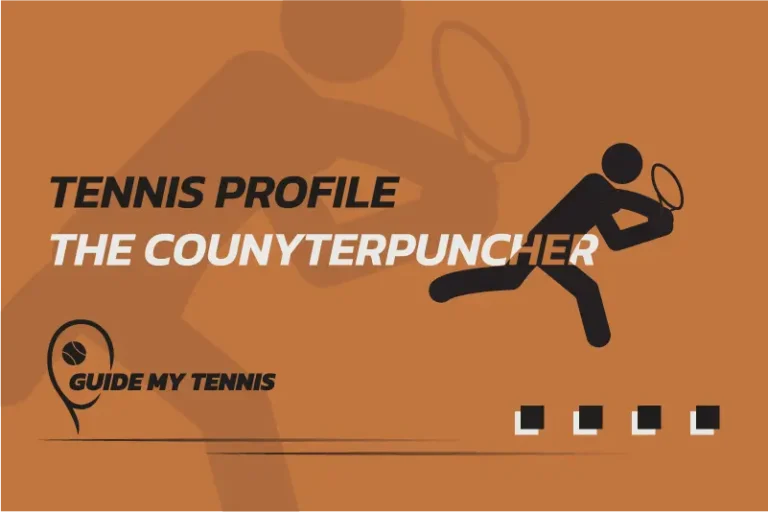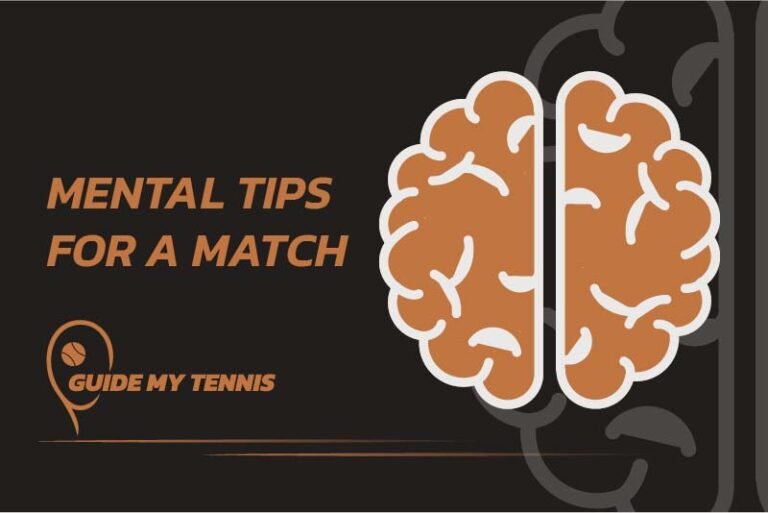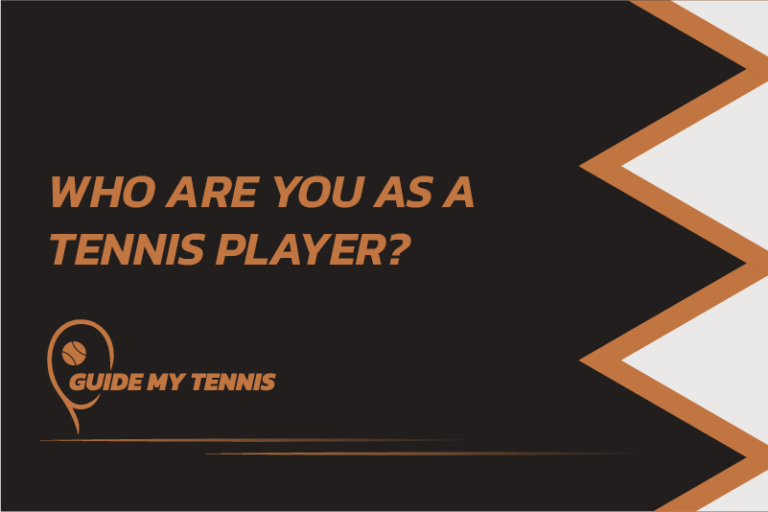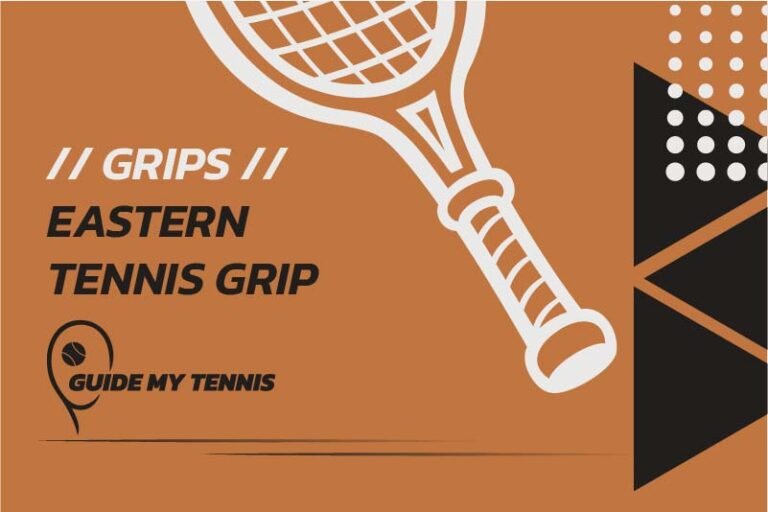10 Tennis Singles Strategy and Drills: Learn to Dominate
If you’re seeking some guidance on how to approach a tennis match better, than you came to the right place. This blog tackles 10 tennis singles strategies and tips that will help you boost your levels when playing a singles tennis match.
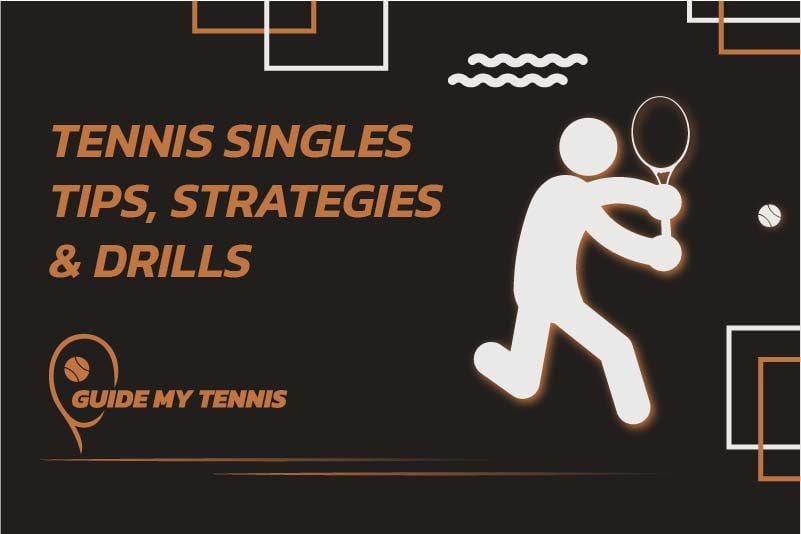
Having no strategy in a tennis match is identical to having no compass and being stranded in the middle of the desert. You would have no sense of direction, no idea what to do next and have absolutely zero awareness of what to expect. That is what we will be discussing today, the importance of having a solid tennis singles strategy. In fact, I want you to improve your game so much, that I even threw in a couple of drills to try with your partner the next time you’re on the tennis court. And you don’t need any special equipment for these.
A strategy in a tennis singles match is fundamental as it helps you paint an image of what you want to achieve. As said., this guide will provide you with different tips and plans that you can implement in your tennis play. Let’s dive into this tennis singles strategy breakdown.
#1 – Attack the net
Tennis singles strategy number 1… don’t be afraid to attack the net!
Being able to anticipate when to creep up towards the net to kill the shot is a skill that many seek to master. Being a steady baseliner who can pack a punch with your forehand and backhand is a great skill that any good player should have. This must be paired with the know-how of how to attack the net. In the process of learning this, you will open a plethora of options for you.
In a tennis singles match, the most common shots are down the middle or angled to the side. If done well, the opponent is bound to give you a short ball. Be aware of this, and anticipate this shot so that you will be able to come up to the net in time. Anticipation is key for effective net play!
Use this to alter your style and be unpredictable. Take control of the match tempo, rather than letting your opponent dictate it. Play deep shots, put pressure on the opponent and once you get the opportunity, hit an approach shot and go up the net. Remember that this is a skill that requires some practice to master, so don’t be discouraged if you fail at first. Keep trying!
If you want to improve your skills at the net, here’s how to do it…
1-Shot + Volley
Super easy drill, just hit a shot and approach the net. If you are serving, you need to serve and approach the net on the first volley. If you are serving a second serve, the returner must produce a good return and approach the net. When it’s time to hit the volley, the player must be ready to put away the ball, ending the point swiftly.
Here’s a tip for the returner… When the server is doing the toss for the serve, creep forward to be as close to the net as possible, whilst maintaining a good enough distance to produce a great return. If you’re too far back for the return, you might end up being caught in no man’s land.
Attacking the Short Ball
The aim of this drill is simple. Start by playing crosscourt, where players can only hit down the line if the ball is short and provides an opportunity to approach the net. After the down-the-line approach shot, the point is played out. But the aim is to maintain consistency and be patient until the opportunity arises to be aggressive and attack the short ball.
So imagine there is a cross court rally going on. Player A will hit the shot, deep inside the court. Player B then, for some reason, gives a weak ball and lands before the service line, depicted with the red line. This will serve as an opportunity for Player A to attack the ball with a down the line shot. This is shown as a green line. This allows Player A to attack the ball and approach the net.
I personally love the drill as it drives you to achieve consistency by receiving different types of shots.
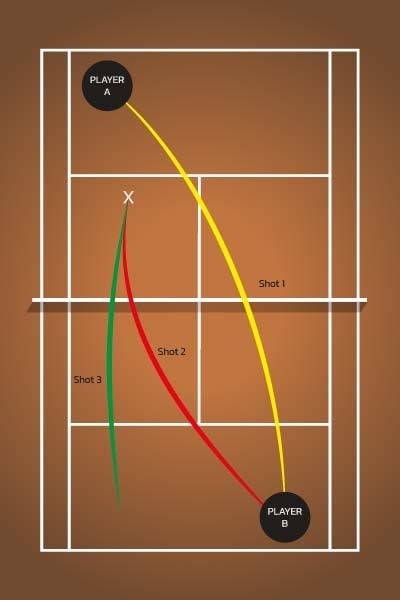
#2 – Find the opponent’s weak spots
Okay, some of you might be saying “This is common sense.”
However, are you really observing what their weak spots are? Weak spots do not only include their forehand and backhand. In a tennis match, there are various aspects to consider.
Is the opponent a big server? If the answer is no because they have a weak serve, then that is something to exploit. If your opponent has a weak game at the net, then keep hitting short balls to get them to come up at the net. This will make them uncomfortable. Of course, this will vary from one player to the other.
Here is another example. If your opponent is uncomfortable engaging in rallies involving lateral movement, that is a weak spot. You can exploit it by placing the ball from one side to the other, don’t go for power!
Some weaknesses might be easier to spot than others. You have to start testing your opponent whilst warming up and in the early games of the first set. My personal rule of thumb is to experiment with different shots during the first three games to have an idea of what the opponent is capable of doing. I then tend to settle on a strategy and have a back up in my mind.
Note that if you’re not sure how to proceed, it is always best to play in a manner which you find most comfortable. That way, you don’t give away too many errors.
#3 – Hit across, it’s easier
This is more of a tip than a strategy, but as a tip, this will significantly decrease your percentage of errors. The reason is that when you are hitting the ball across, the ball has to travel a greater distance than a down-the-line shot. Moreover, the angle at which you have to hit a down-the-line shot is more difficult than that of a cross-court.
Remember this when you are playing, even if your opponent’s forehand packs a punch! If you (or your opponent) want to try and hit a down-the-line shot, remember that you are facing a lesser margin of error. And errors can cost you the game!
This tip can really help you bolster your tennis singles strategy!
#4 – Stay diagonally across the opponent
Singles tennis tip number 4 goes hand in hand with its previous one. Your opponent is more likely to hit a cross-court shot than a down-the-line, simply due to the large margin of error involved with hitting a down-the-line shot.
Many tennis coaches say that after you hit your shot, you should recover. This is true, but remember that when you recover, you should not always go to the centre of the court. If you are staying at the centre, you are making yourself vulnerable to a cross-court shot.
#5 – Achieve consistency
The fifth tennis singles strategy tip on my list is to achieve consistency. Consistency in a tennis match will help you win more matches.
Honestly, it is difficult to stress the importance of keeping the ball in play. Each time you put the ball in your opponent’s half, you are making your opponent hit another shot and automatically creating the chance for a mistake. This may sound obvious to some, but too many players focus on playing killer shots and lose matches through a lack of consistency. Don’t make that mistake!
Did you know that many recreational players, somewhere between 55% and 65% fail to play a rally of more than 4 hits? You must be shocked, as I was when I first learnt about this. Here are some drills to help you achieve consistency…
Rally with your Partner
It’s an easy drill, the target is to get the ball going and keep it going for as long as you can. If you want to make it a bit more challenging, you can rally cross-court and work on your precision. Otherwise, you can also have one hit down-the-line shots whilst the other hits cross-court shots. This will benefit both your precision and footwork skills.
Clear the Net
A general rule of thumb is to clear the net by at least a racket’s length. This will ensure that you don’t give away too many unforced errors. Such errors can easily cost you the game and match.
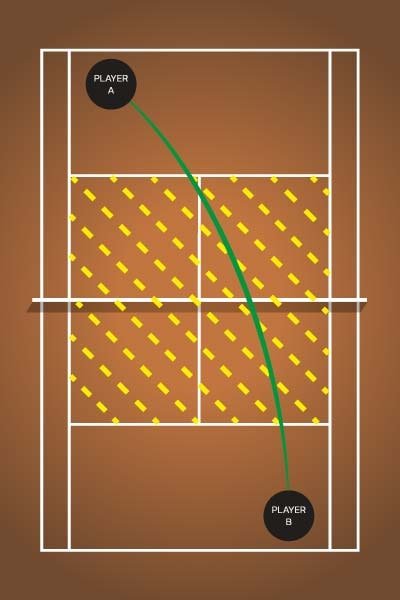
Play Deep
If you place the ball in the no man’s land region, you’d be automatically inviting pressure during a match. So one of the things you need to keep in mind is to place the ball closer to the baseline.
A personal favourite drill is to place a couple of cones about a racket’s length away from the baseline and alleys. These cones will act as a target, where the aim of the drill is to place the ball as close to the cones as possible. This will ensure that you play deep, whilst playing safely. Playing safe means that you don’t risk having the ball go long because you aim too close to the baseline.
Another great drill is to place a mini net in front of the service line. The drill will be to simply get the ball over the mini net, prompting you to automatically play deep. Such a drill works well to help you clear the net as well.
#6 – Vary your serves…be unpredictable
A tennis match is influenced by who has the better serve. In tennis, you can hit a wide serve or a body serve, you can even serve the ball with so much kick that you will put your opponent off instantly.
Unfortunately, we tend to find a service that feels comfortable for us and we stick to it. However, when sticking to one type of serve, you are automatically losing the advantage that you have as a server. Remember, you as a server have complete control over how to start the point, so don’t be predictable.
As a rule of thumb, you should vary your serve 1 in every 5 serves. That way you can always keep your opponent guessing and avoid losing the upper hand instantaneously (losing your serve game). This is a critical point to add to your tennis singles strategy notes!
In tennis, you also have the advantage of having a second serve, a second try. So, for the first serve, my tip is to try your best. If it goes in, you start the point on a strong note, if not, you have your second serve.
But listen up. If you don’t take care of your second serve, you will find yourself losing. You will lose not just points but also games as you will be giving away double faults for nothing. Make sure that your second serve is consistent and has some spin on it to not make it easy for your opponent to attack you.
#7 – Have a great return of serve
Having a great return of serve is another thing that you should consider to achieve. Look at Novak Djokovic. He has arguably the best return of serve amongst all ATP players. This puts him on level ground with big servers and can even use it to turn a powerful serve into an aggressive and offensive shot.
To hit a great return, you have to be mentally prepared for the upcoming shot. If you’re still dwelling on that last shot you lost, then the opponent already has the work cut out for them. Not being focused on the return means you have a higher chance of hitting a weak return and inviting pressure.
To improve your return of serve, you have to be fast with your feet, prepare your groundstroke as early as possible and keep your swing as short as possible to master the timing of your shot.
But hey, the best way to learn is to practise constantly. Remember that!
#8 – Know when to play aggressively and when to defend
Playing aggressively is something that many players are opting for nowadays. The reason is that today’s technology that is being used in tennis rackets allows players to whip the ball at great power. That being said, you need to understand that playing aggressively often means sacrificing some levels of consistency. Is this worth it? Well, it depends.
When you play aggressive tennis, you start the point by forcing your opponent to defend from the very first shot. If you have a powerful first serve, this card can be played in your favour. After a great first serve, if the opponent struggles to play the ball deep, you will find yourself approaching the net and playing an angled shot. If the opponent has a great return (of serve), you may find yourself unable to play aggressive tennis in every point.
Here are a couple of exercises that you can try to improve your aggressiveness on the court.
Serve and Finish in 3 Shots
These two drills are very easy to practice. If you are the server., you must serve and finish the point within 3 shots, including the serve. So in reality, you have the serve and an additional 2 shots to close the point. If the returner manages to keep the ball going after the server’s third shot, then the returner gets the point.
Return and Finish in 3 shots
This is quite similar to the previous one. The only difference is that instead of attacking on your serve, you have to attack on your partner’s serve. Therefore, you have a return of serve and 2 additional shots to close out the point.
Note that roles can be swapped in these drills, enabling players to practice both their consistency levels and their aggressiveness.
#9 – Play your best possible shot – do not overdo it
This tennis tip is one that I have learned along the road. It is something that experience has shown, time over time. When we are playing, we often forget that our main objective is to simply put the ball over the net. How is mostly up to us. And here is where many tennis players make mistakes.
Most try to win points by hammering the ball at every possible occasion. But have you considered that sometimes, just putting the ball in is simply enough to win the match?
In addition to that, you need to understand that not every shot works in every scenario. For example, If you receive a lob, it is mighty difficult to hit back a dropshot. And even if you do, it is certainly not the shot that you should opt for. Again, if you are receiving deep shots and find yourself a couple of metres behind the baseline, don’t go for a dropshot. The opponent will see this from a mile away. Not to mention the fact that you are at a disadvantage as it is likely to get stuck at the net due to how far back you are.
Whilst playing tennis, there are several different factors that may affect how you hit the ball. For example, you can hit a flat, topspin or slice shot. You can hit a high or a low shot. Here is a breakdown of the factors you can vary in your shots.
- Spin: Topspin, slice and flat
- Depth: Long and short
- Height: High, medium and low
- Direction: Right, middle, left
- Speed: Fast, medium and slow
When varying these elements to play your best possible shot, you’d also be creating an environment that is super difficult for the opponent. Why? Because the opponent has to continuously adjust to the different balls that are coming their way. Remember, sometimes a good defence is the best offence, or so I believe.
So remember, always choose the type of shot to play wisely. More often than not, it is good enough to just return the ball on the other side without hitting any difficult shots. If you want to find out what type of tennis player you are, here is your opportunity. This can help you also identify what your strong points are.
#10 – Be mentally prepared for your tennis game!
Unfortunately, without being mentally prepared, you cannot win any games. The reason is that if you are not mentally prepared, you will get frustrated with every mistake you make. Ultimately, this will cost you the game and you will not have fun playing tennis.
Remember, the secret to success is to enjoy what you’re doing. Everything else will become a product of this. What I personally like to do is to go to my match 25 to 30 minutes before, get accustomed to the environment and soak in all the noise. This is especially useful if you’re playing at a new venue. Then, I like to either listen to some music or exchange a word or two with some other players, all whilst performing some light stretches to warm up.
How do you like to prepare yourself for a tennis match?
I Understood the 10 Tennis Singles Strategy Tips, What’s Next?
If you reached this far in the blog, then you only have one single thing left to do. Go out there and practice. The reality is, that in a match, you will be making use of multiple tactics and techniques in order to overcome your opponent. If you stick to the same stroke, you will become predictable and be defeated easily.
As a result, my recommendation is to have three main strategies that you primarily use. The other different strokes and strategies are to be used in order to add some variation.
That’s it from my end, over and out.
Happy playing!

